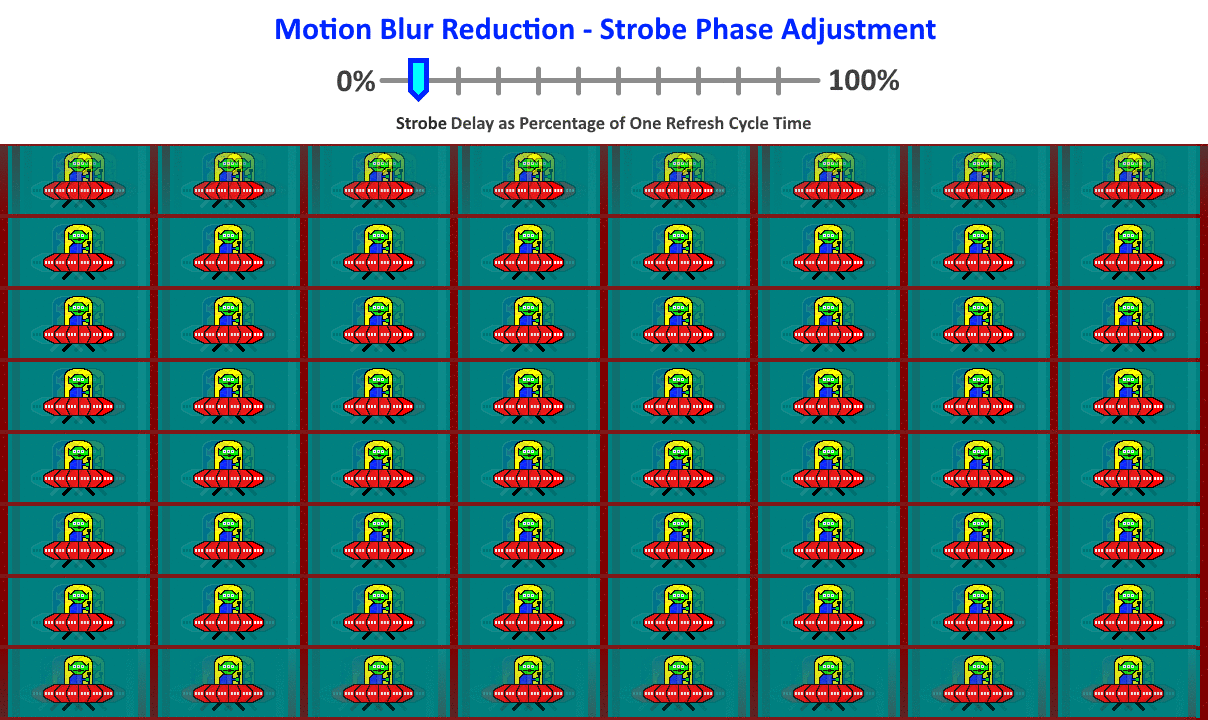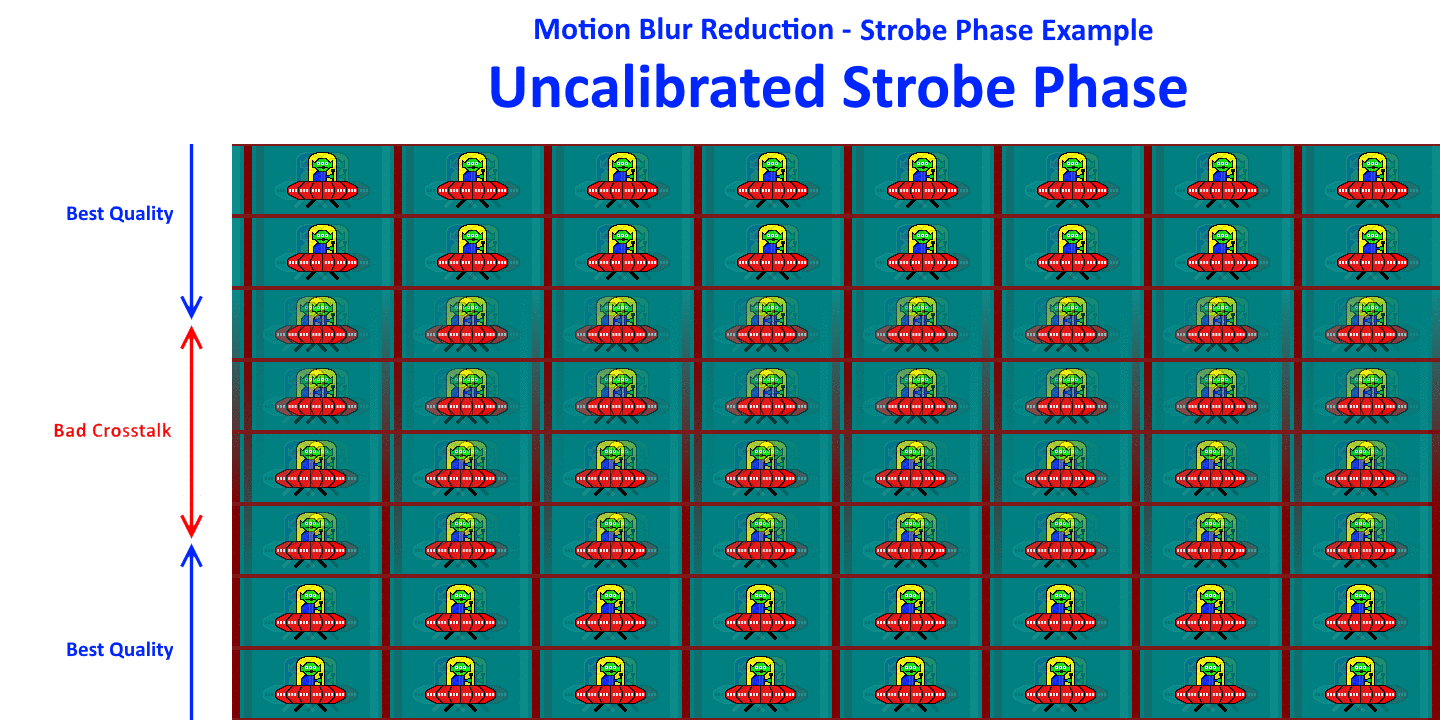Falkentyne wrote: ↑11 Mar 2020, 00:45
The part "
above" the worst part of the crosstalk is basically the previous frame (or in other words, the frame that was rendered earlier--you can actually say that is up to 1 frame of improved input lag).
You got your description almost perfect!

Except it is the opposite word -- below, not above.
It is the area
BELOW the crosstalk band that is laggier.
The area above the crosstalk-band is AHEAD of the area below the crosstalk-band.
Watch the
high speed video tests show that panels will refresh the top part of the screen surface before the bottom part. These are high speed videos of TestUFO scanout at
www.testufo.com/scanout which flips between 4 images rapidly, 1 image per refresh cycle.
See the frame numbers? They're fresher at the top edge of the screen.
TL;DR: Top edge is ALWAYS refreshed first before bottom edge!
The top edge of the screen is above the crosstalk band, and thus lower lag. Conceptually, the strobe backlight (flash) is sort of like a flash photograph mid-scanout -- freezing the visibility of the panel's current GtG pixel transition state -- the crosstalk bar is where the GtG pixel transitions are still in middle of transition. Because of this, the common classic Leo Bodnar Lag Tester lag gradient (TOP < CENTER < BOTTOM) does not apply here.
Quality wise, you want GtG to be between refresh cycles, but some people want lower lag for screen centre, so moving the crosstalk bar upwards to right below the crosshairs, reducing the lag of screen centre during strobed operation.
Bandaidsrmyjob wrote: ↑10 Mar 2020, 12:08
In the service menu of the xl2546 what do the options "intensity" and "Area relate to? I played with either setting with dyac off and on. I seen that with dyac on "intensity" must act like ULMB as the brightness of the display decreased with higher numbers up to max of 25. Area however goes from 1-100 without any noticeable change.
You MUST view a motion test while adjusting. While viewing
www.testufo.com/crosstalk --
That's why downloading
Blur Busters Strobe Utility is easier than the service menu, it has that TestUFO test built-in into the executable application!
Adjusting "Area" or "Strobe Phase" looks like this:

From
ANIMATIONS: Adjusting strobe phase / crosstalk
These are example of different user preference (quality priority --versus -- latency priority)

During VSYNC OFF, strobing creates an inverted latency gradient (relative to non-strobed VSYNC ON)
VSYNC ON, nonstrobed creates TOP < CENTER < BOTTOM lag
VSYNC ON, strobed creates TOP = CENTER = BOTTOM lag
VSYNC OFF, nonstrobed creates TOP = CENTER = BOTTOM lag
VSYNC OFF, strobed creates TOP > CENTER > BOTTOM lag
Assuming perfect strobe phase centered in VBI.
Run 100 lag measurements averaged, will create these very interesting input-lag gradients along the screen's vertical dimension!
But if you adjust strobe phase to move the crosstalk bar, the latency gradent changes so TOP-vs-CENTER-vs-BOTTOM is in different ordering of input lag, as according to the following chart:

So you've divided the latency gradients according to the crosstalk bar location!
TL:DR: Lowest input lag is always in the screen panel area
immediately above the crosstalk band.


